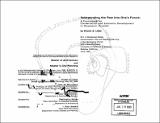| dc.contributor.advisor | John de Monchaux and Jan Wampler. | en_US |
| dc.contributor.author | Little, Kristin S., 1968- | en_US |
| dc.contributor.other | Massachusetts Institute of Technology. Dept. of Urban Studies and Planning. | en_US |
| dc.coverage.spatial | s-ec--- | en_US |
| dc.date.accessioned | 2012-01-12T19:20:39Z | |
| dc.date.available | 2012-01-12T19:20:39Z | |
| dc.date.copyright | 1999 | en_US |
| dc.date.issued | 1999 | en_US |
| dc.identifier.uri | http://hdl.handle.net/1721.1/68356 | |
| dc.description | Thesis (M. Arch.)--Massachusetts Institute of Technology, Dept. of Architecture; and, (M.C.P.)--Massachusetts Institute of Technology, Dept. of Urban Studies and Planning, 1999. | en_US |
| dc.description | Includes bibliographical references (p. 103-112). | en_US |
| dc.description.abstract | Conservation and revitalization efforts in Latin America have been typically centered on the preservation of individual monuments and historic buildings. This approach has recently led to the development of more integrated revitalization plans that begin by seeking to conserve the area as a whole. This thesis presents an outsider's observation of the situation in the Las Penas neighborhood of Guayaquil. Ecuador from a two-point perspective planning and architecture. Using case studies and site-based observations, this thesis proposes elements to be considered in creating a framework for future development by the residents and planners of a Las Penas. These elements are distilled into several guiding policy and design principles with the goal of achieving the greatest collective benefit. In contrast to prescriptive development guidelines common to revitalization plans, this thesis presents local residents and planners with a palette of guiding policy and design principles intended to inform their own creation of a dynamic framework for the transformation of their neighborhood, Las Penas. | en_US |
| dc.description.statementofresponsibility | by Kristin S. Little. | en_US |
| dc.format.extent | 113 p. | en_US |
| dc.language.iso | eng | en_US |
| dc.publisher | Massachusetts Institute of Technology | en_US |
| dc.rights | M.I.T. theses are protected by
copyright. They may be viewed from this source for any purpose, but
reproduction or distribution in any format is prohibited without written
permission. See provided URL for inquiries about permission. | en_US |
| dc.rights.uri | http://dspace.mit.edu/handle/1721.1/7582 | en_US |
| dc.subject | Architecture. | en_US |
| dc.subject | Urban Studies and Planning. | en_US |
| dc.title | Incorporating the past into one's future : a framework for conservation and economic development in Guayaquil, Ecuador | en_US |
| dc.title.alternative | Framework for conservation and economic development in Guayaquil, Ecuador | en_US |
| dc.type | Thesis | en_US |
| dc.description.degree | M.C.P. | en_US |
| dc.description.degree | M. Arch. | en_US |
| dc.contributor.department | Massachusetts Institute of Technology. Department of Architecture | |
| dc.contributor.department | Massachusetts Institute of Technology. Department of Urban Studies and Planning | |
| dc.identifier.oclc | 44075490 | en_US |
